What to Do and Where to Stay in Bali
28 Apr. 2023
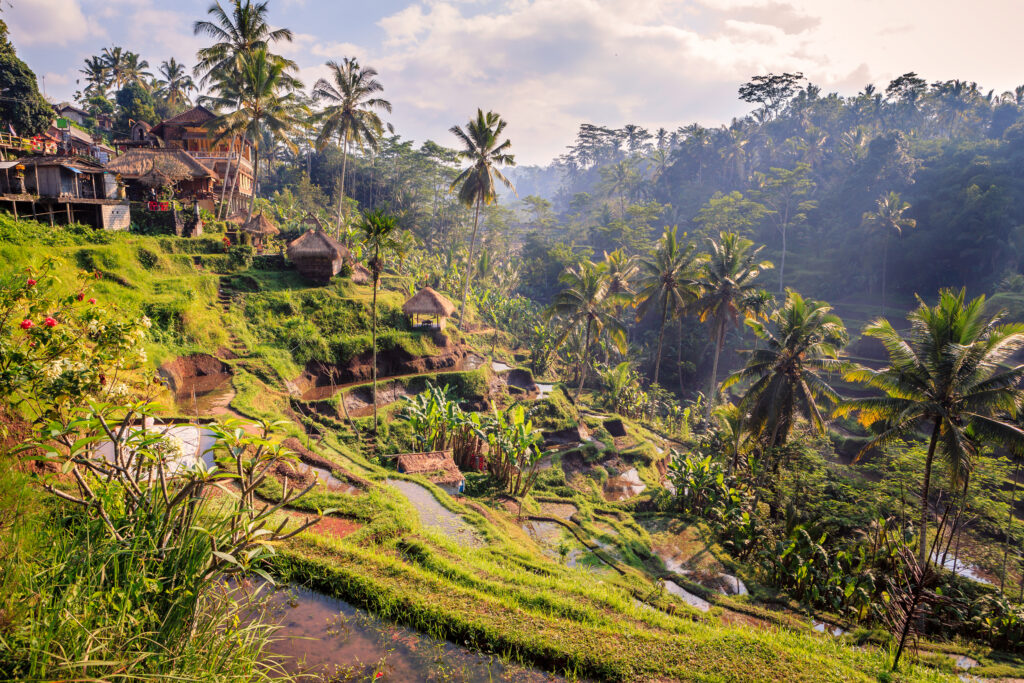
28 Apr. 2023

The Indonesian island of Bali is located between the islands of Java and Lombok. It is a volcanic island with an extremely fertile environment and incredible natural resources that have attracted the interest of many Westerners throughout history. Between its mountains, its jungle, its temples and its ancestral traditions, its authentic villages and its rice terraces that form mirrors of water where the sun is reflected, the island has an atmosphere of mystery that makes it fascinating.
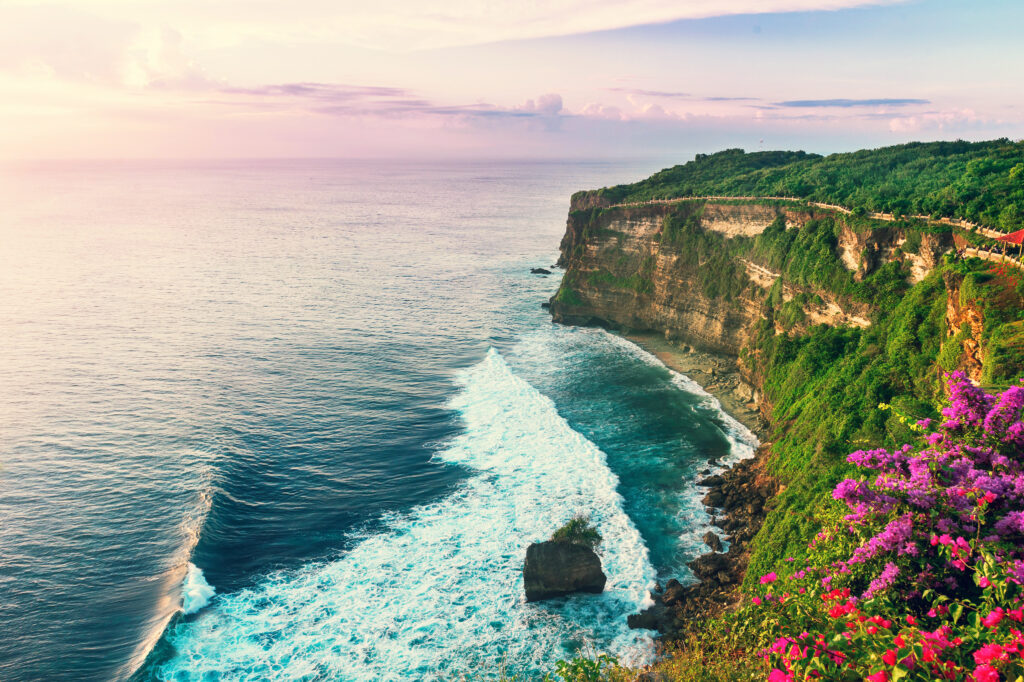
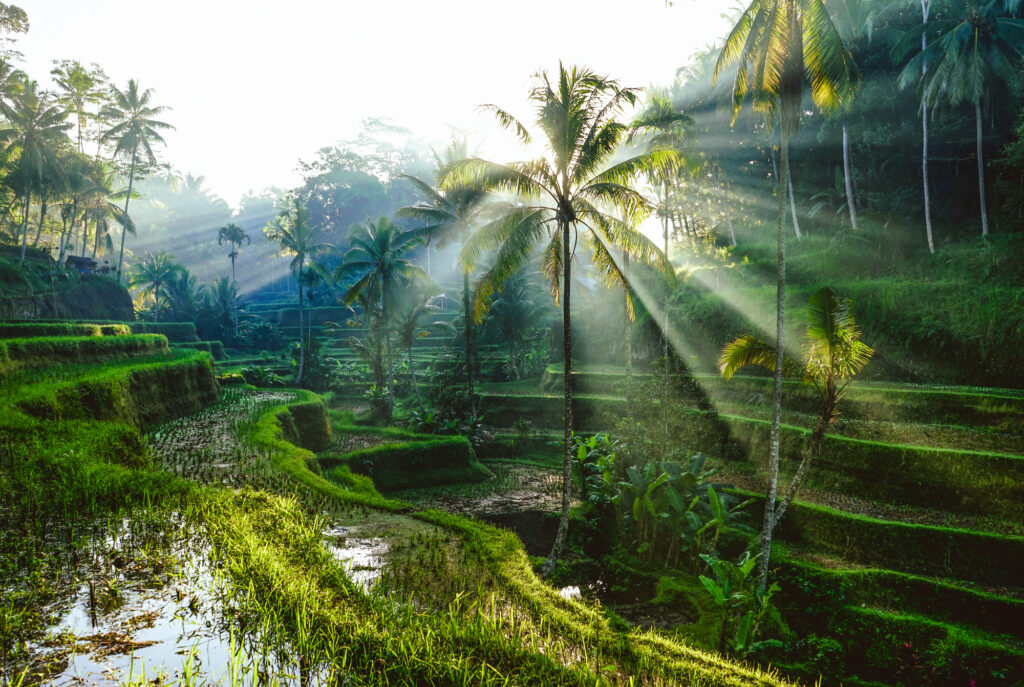
Legends of the island say it would have been created by the god of the underworld which is why it is called “the island of the gods”. Its large heavenly beaches, ideal for surfing, have also made the island famous and it is now the most famous and popular destination in Indonesia. Lartisien gives you an overview of the different things to see and do on the island in order to fully recharge your batteries in an authentic setting.
In Bali, each village has its own identity.
The South, known to be more westernized, is a surfer’s delight, especially the town of Canggu. Located about an hour’s drive from the airport, it can be an ideal first stop to recover from the trip (for those who come from afar), and to acclimatize to Balinese life, before reaching the city of Ubud.
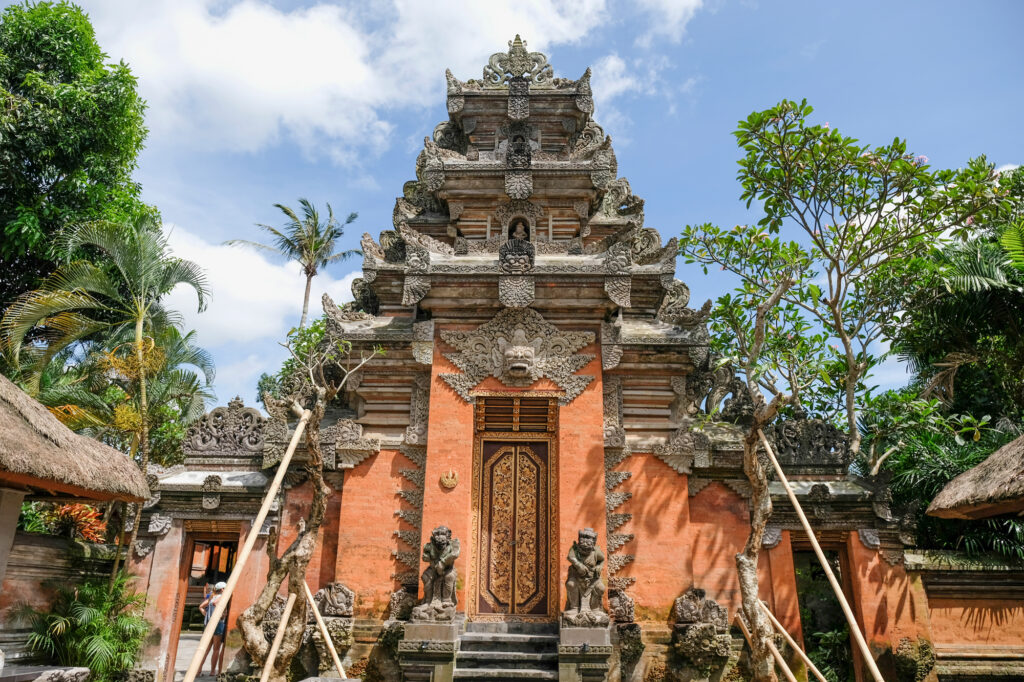
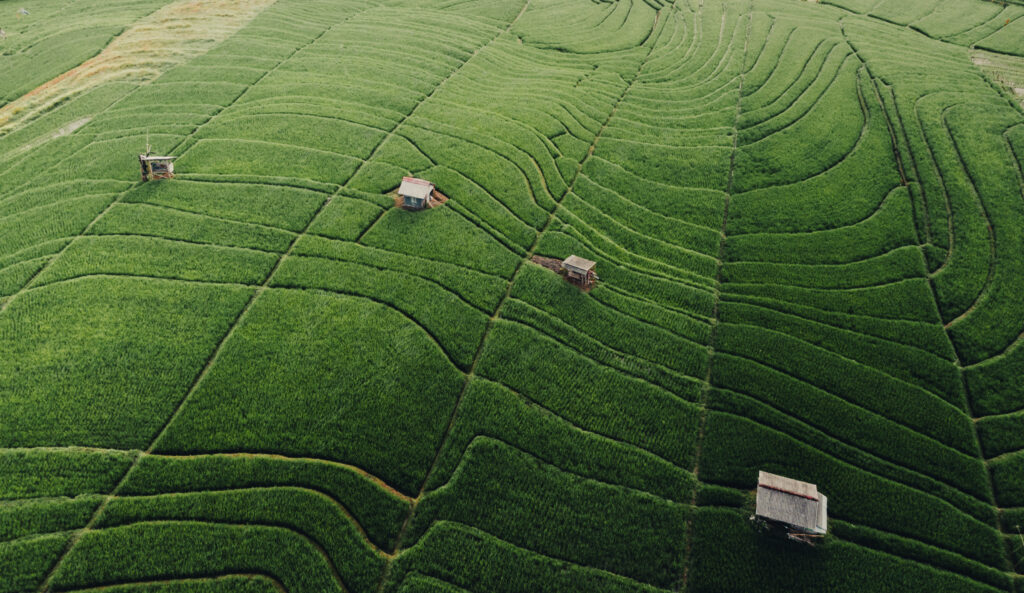
The latter, considered the cultural capital of the island, occupies a central position that allows travelers to radiate easily. The city is famous for its handicrafts, highlighted in its famous local market, but also its monkey forest and its Puri Saren Agung Palace. This former royal residence is where it is possible to attend a traditional Balinese Legong dance show at nightfall, supposed to represent a celestial ballet of divine nymphs.
For travelers seeking more authenticity, the north of the island includes the mountainous region of Munduk located about 2 hours from Ubud. It is still little frequented by tourists but just as rich, with its lush nature, lakes and waterfalls and coffee plantations.
It is impossible to travel the Balinese roads without seeing rice fields. These are ubiquitous on the island and undoubtedly contribute to the beauty of its landscape. They are mostly cultivated in terraces, according to a traditional irrigation system called “subak” which is one of the particularities of Bali.
If the spectacle they offer varies with the seasons, it is an enchantment for visitors at all times. Before the harvest, the rice fields adorn the island with splendid shades of green, offering beautiful shots to nature lovers. Once the rice is harvested, the rice fields do not lose their charm. Thus, during the rainy season, as the water fills the terraces, they are adorned with infinite reflections.
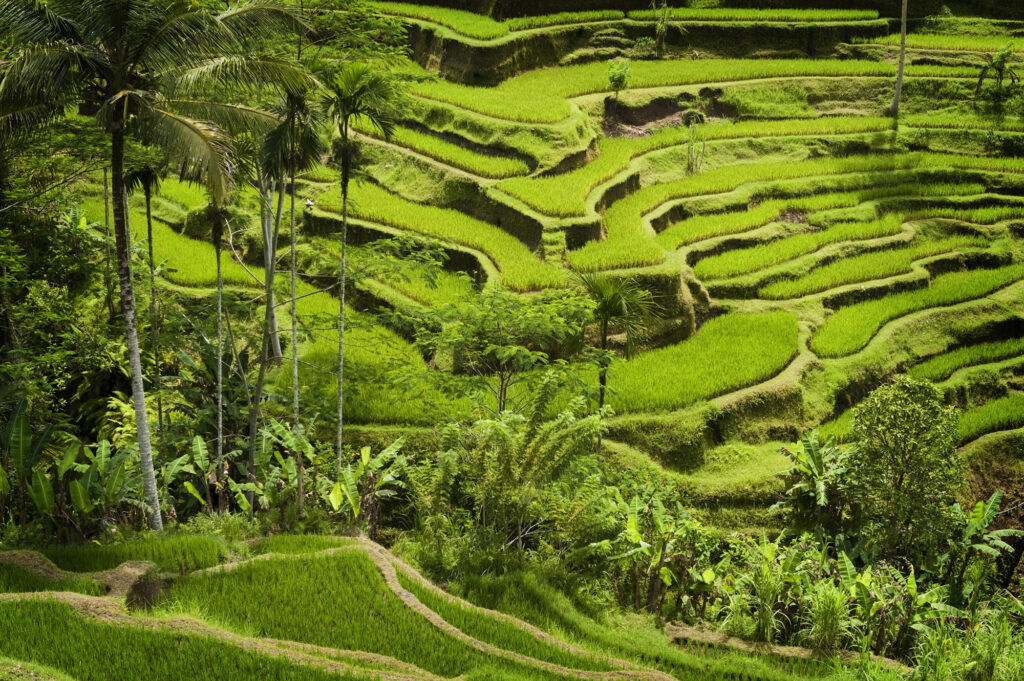
The trips by car or two wheels are the occasion to admire many rice fields visible from the road, such as the famous rice fields of Tegallalang. Located in the village of the same name, about 20 minutes drive from Ubud, these rice fields are among the most famous on the island. If their fame attracts many visitors, do not hesitate to exceed the horde of tourists who gather at the entrance of the rice fields to immortalize their passage by a photograph, and get lost in the winding alleys of the terraces. On this occasion, the walkers will be able to stop in one of the small wooden huts on the road and taste a fresh coconut while admiring the view of the rice fields. For the less sporty, cafes and restaurants installed along the road allow to admire the panorama without effort.
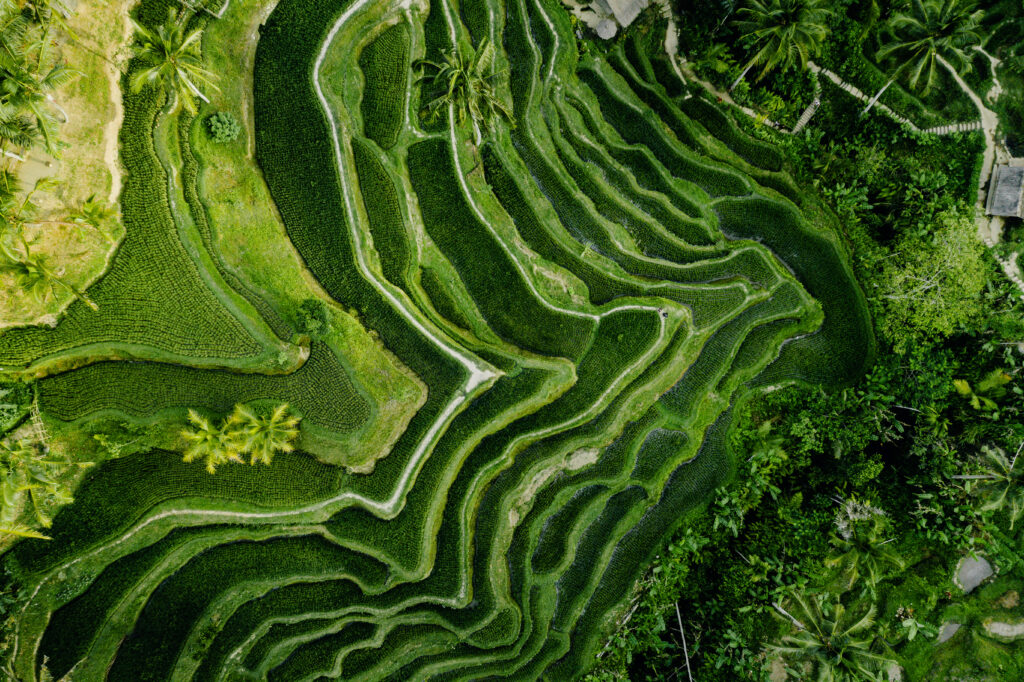
The rice fields of Jatiluwih are also a must-see during a visit to Bali. Listed as a Unesco World Heritage Site since 2012, these rice fields are located in the Tabanan region, in the northwest of the island, about 1h30 from Ubud. It is the largest area of rice fields on the island. To discover them, several routes are proposed to visitors depending on the time they want to spend, ranging from 45 minutes to 4 hours. The walkers will have the privilege to cross peasants covered with a traditional hat in palm leaves, busy transplanting rice after the harvest.
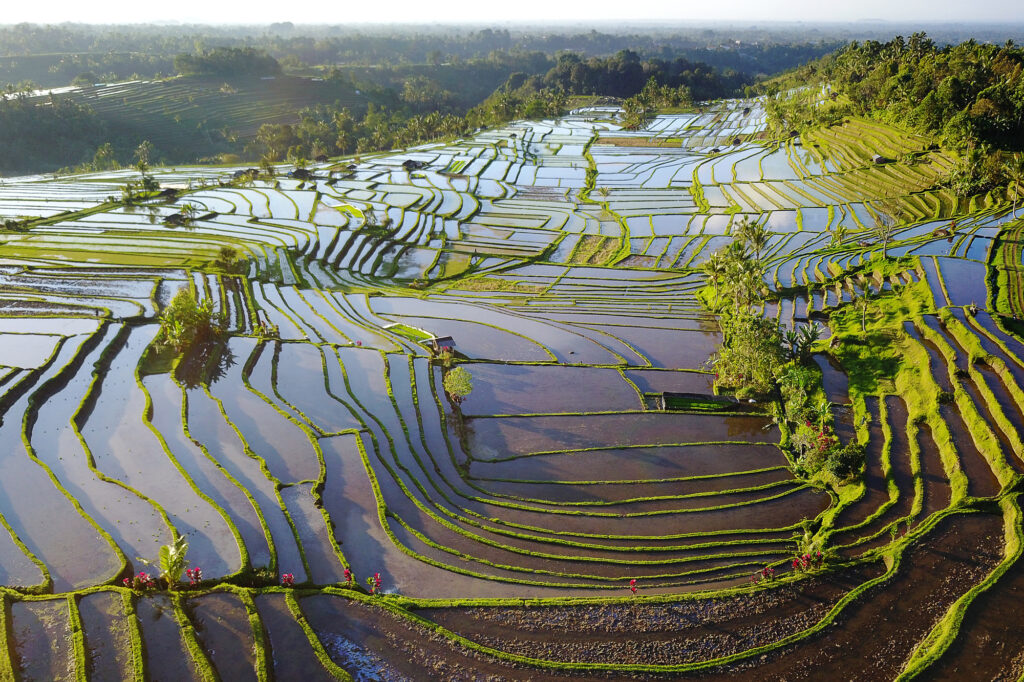
Less known than the first two, the rice terraces of Sidemen have nothing to envy them. Located in the east of Bali, they extend as far as the eye can see in the middle of the green nature. For travelers seeking authenticity, their visit is also an opportunity to discover the region of Sidemen, less frequented by tourists.
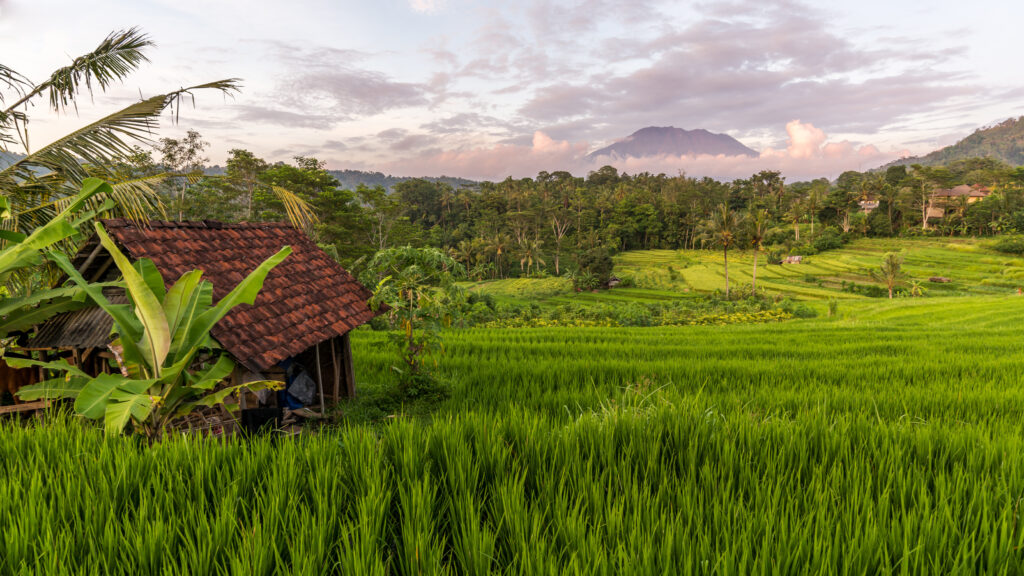
Religion is very important to the Balinese. It is therefore unthinkable to go to the island that is nicknamed “the island of 10,000 temples” without visiting at least some of them. Each village has an average of three temples, with some offering tourists in search of wonderment of landscapes worthy of postcards.
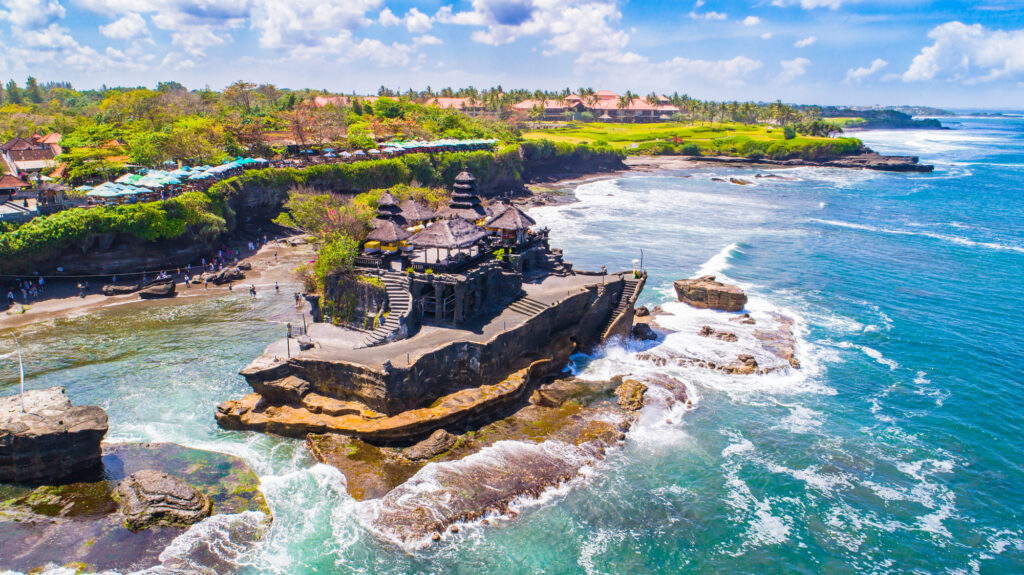
This is the case of Tanah Lot temple, one of the most emblematic of the island and also one of the most visited. Perched on a rock in the west of Bali, it is particularly famous for the view it offers at sunset. To avoid the crowd, it is preferable to go there early in the morning or early afternoon, depending on the tides. It is accessible on foot at low tide and only by boat when the sea rises.
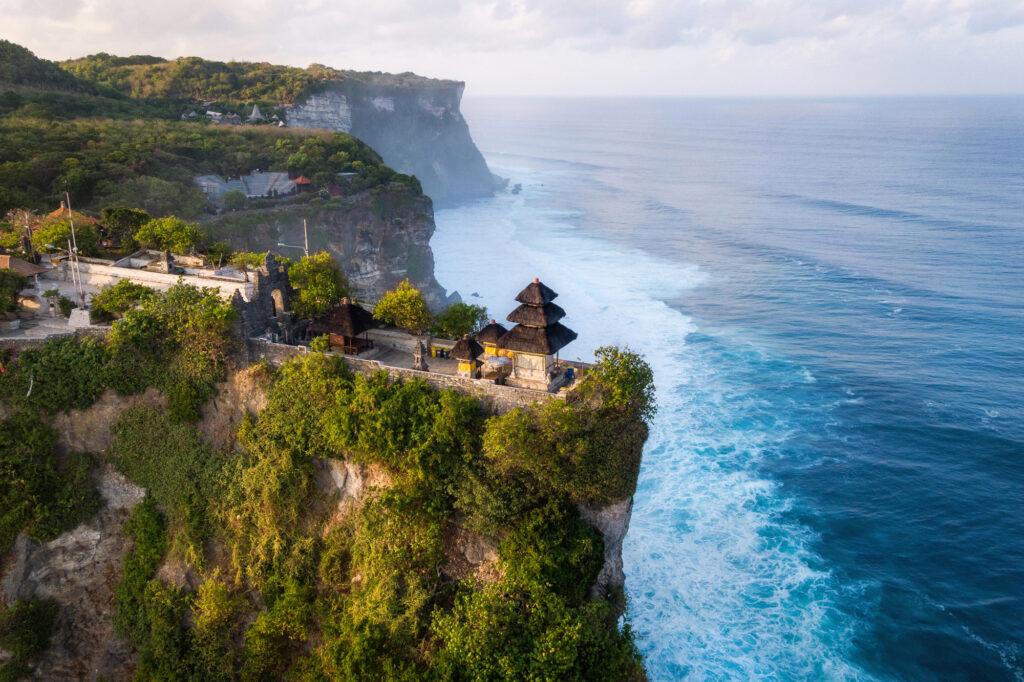
The temple of Uluwatu, also called Pura Luhur, is, as for him, nested on a cliff of 70 meters high in the south-west of Bali and offers a striking panorama of the ocean which it overhangs. After watching the sunset, visitors who go there at the end of the day will be treated to a traditional Kecak performance, a vocal percussion choir combined with trance rituals, dance and theater.
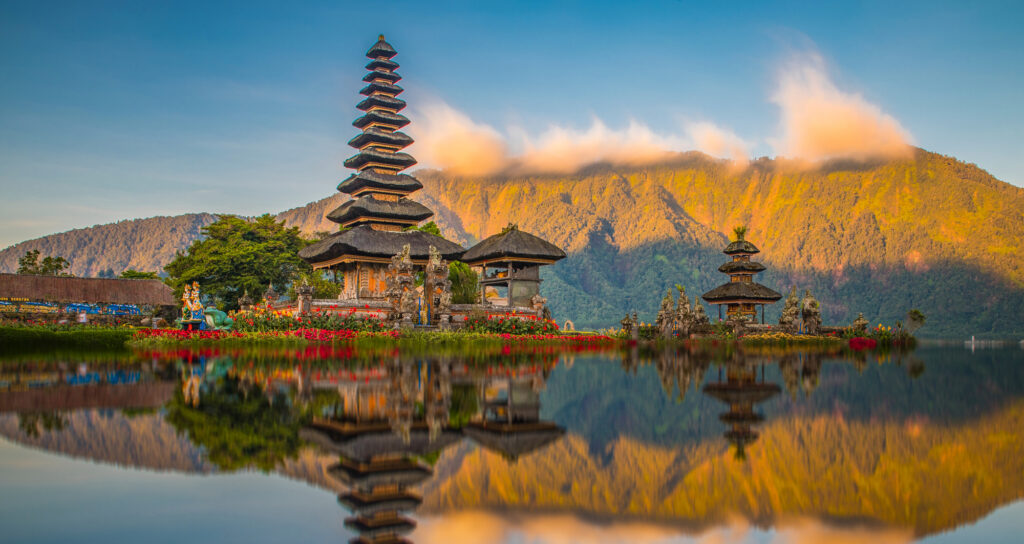
It is necessary to move away from the coast to reach the Ulun Danu temple. Reputed to be one of the most beautiful on the island, it is built on the shores of Lake Beratan, in the heart of the Balinese mountains. Dedicated to the water goddess Dewi Danu, this temple is one of the symbols of Bali. It is featured on some 50,000 rupiah bills. Its flowery gardens lead to an eleven-roofed meru (a carved wooden tower topped with overlapping thatched roofs, the number of which varies according to the dignity of the deity honoured) that stands majestically facing the lake, revealing to visitors an idyllic landscape.
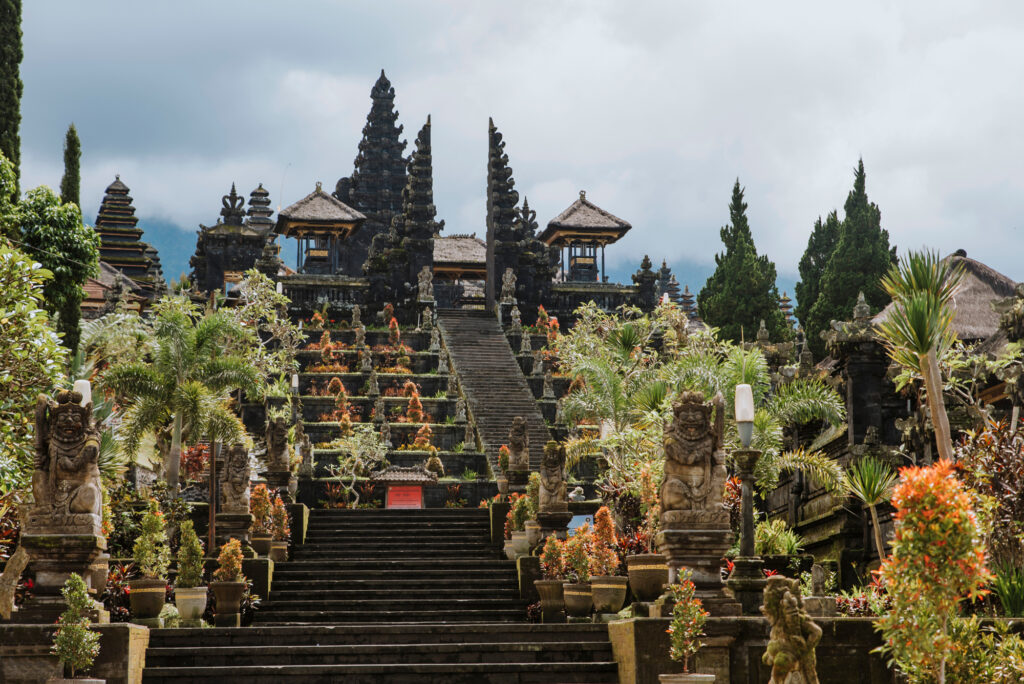
Pura Besakih or “mother temple”, erected on one of the slopes of Mount Agung, is the largest on the island. It comprises more than eighty-six individual temples and is considered the most sacred by the Balinese, who regularly go there on pilgrimage. Visitors will be able to immerse themselves in Balinese culture and may have the chance to attend one of the many religious ceremonies it hosts each year. On this occasion, they will be able to observe the faithful dressed in their colorful sarongs to meditate, and to smell a sweet perfume of incense and flowers emanating from the offerings made to the gods.
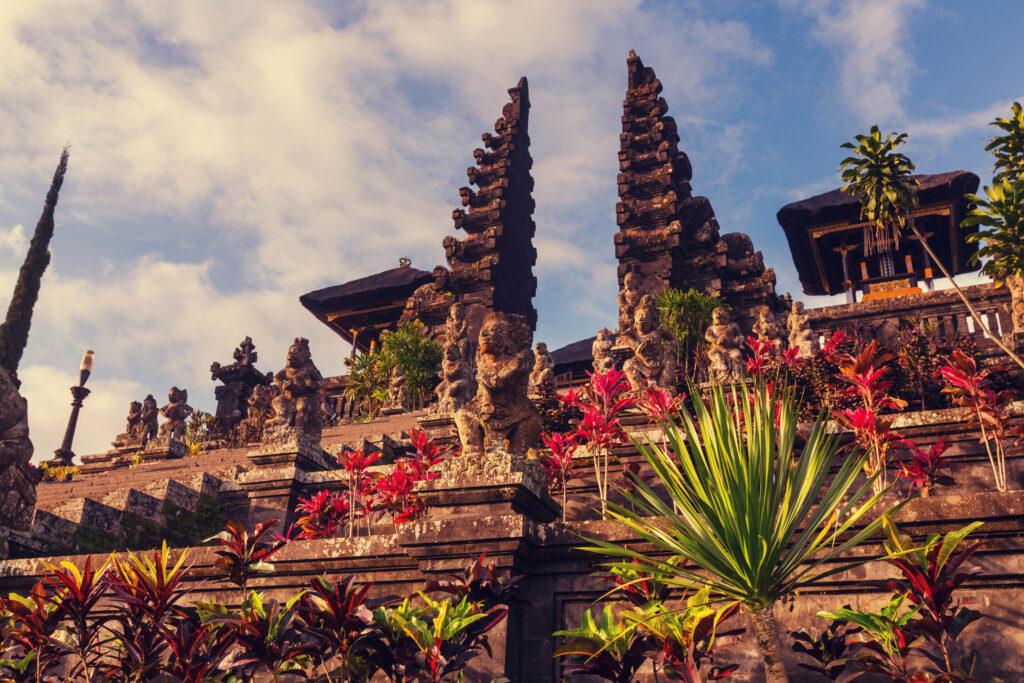
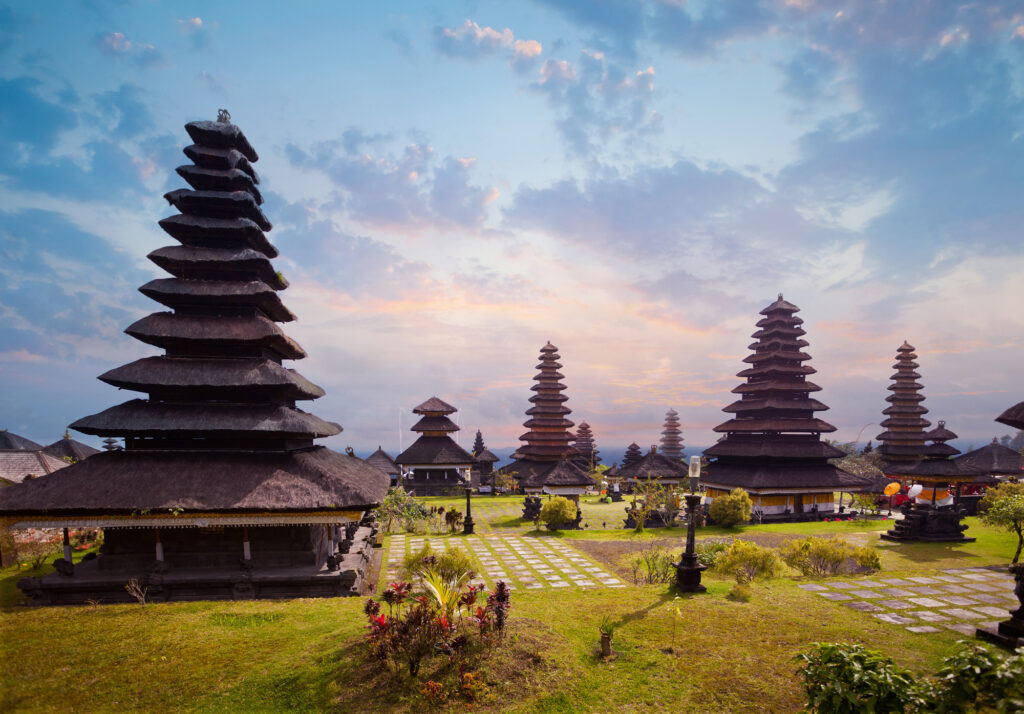
The island is home to many waterfalls nestled in the middle of a green nature.
Located 30 minutes by car from Ubud, the Tegenungan waterfall is one of the easiest to reach, a staircase having been built to reach it. The 25 meters high waterfall flows into a natural pool in which visitors can swim.
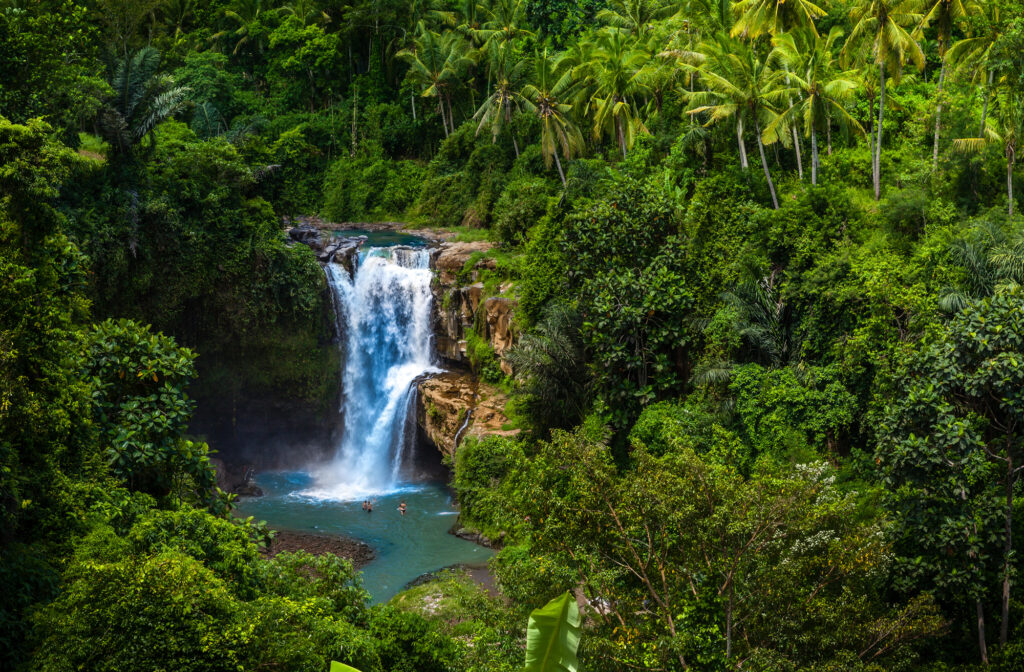
The Sekumpul waterfall is, for its part, located in northern Bali. Less accessible than the others, it is also less frequented. To reach it, the curious must engage in a hike in the middle of hills and rice fields, before taking steep stairs. Finally, you have to cross a river to reach the waterfall which stands in the middle of a lush and preserved nature. Sekumpul offers the possibility to discover seven waterfalls.
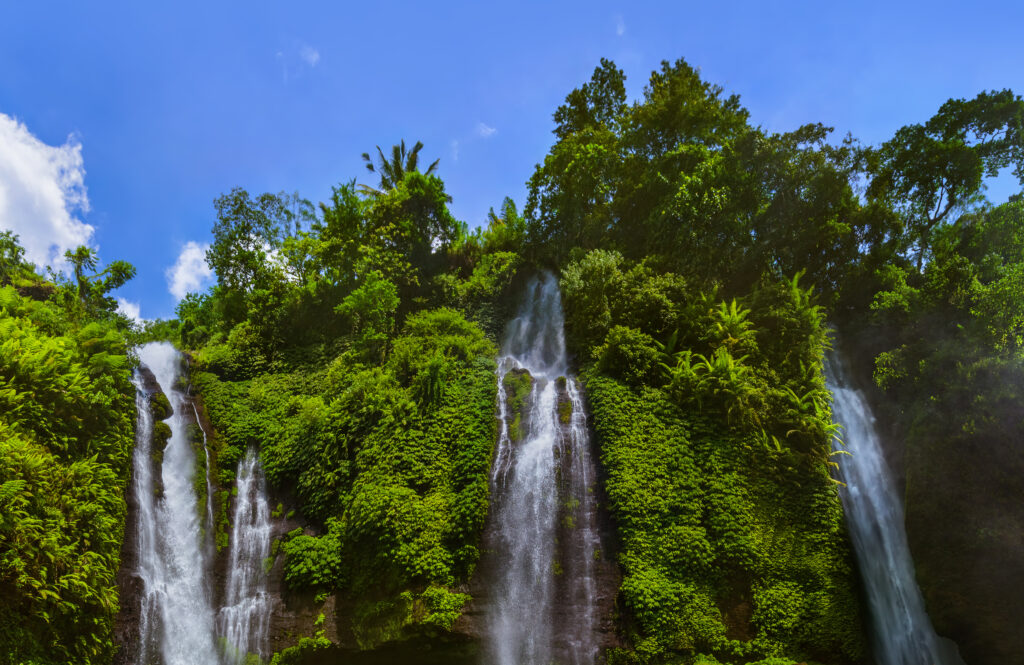
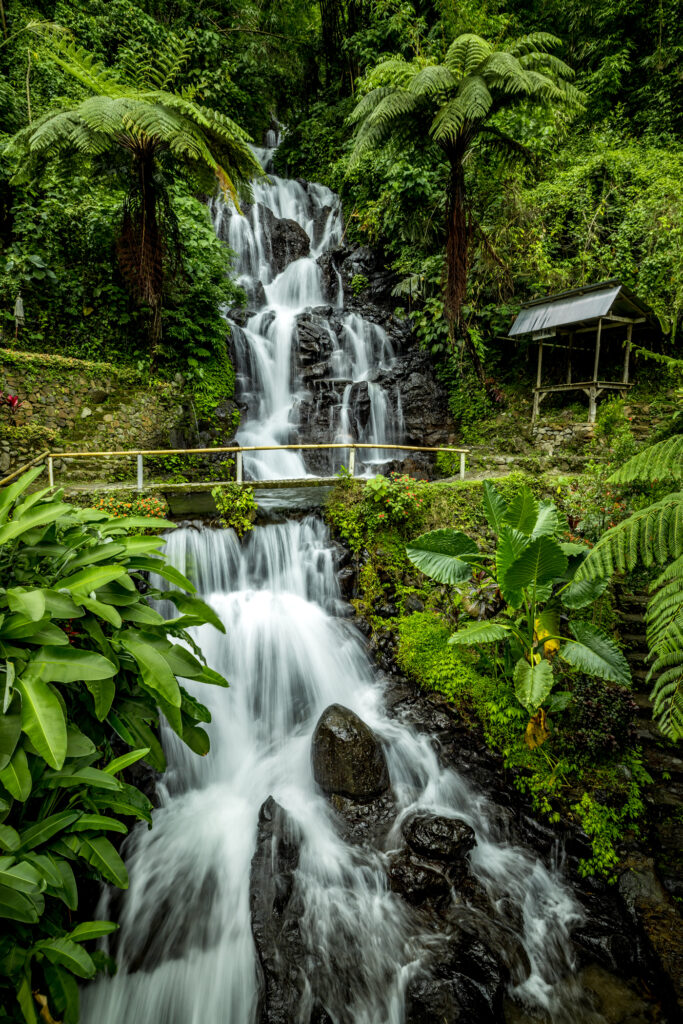
Still in the north of the island, the Gitgit waterfall impresses with its size of nearly 40 meters high, which ranks it among the largest on the island. It flows in a real green setting. Like the Tegenungan waterfall, it flows into a natural basin that delights visitors in search of coolness during the dry season. Nearby, the Jembong waterfall impresses not so much by its size as by the power of its waves.
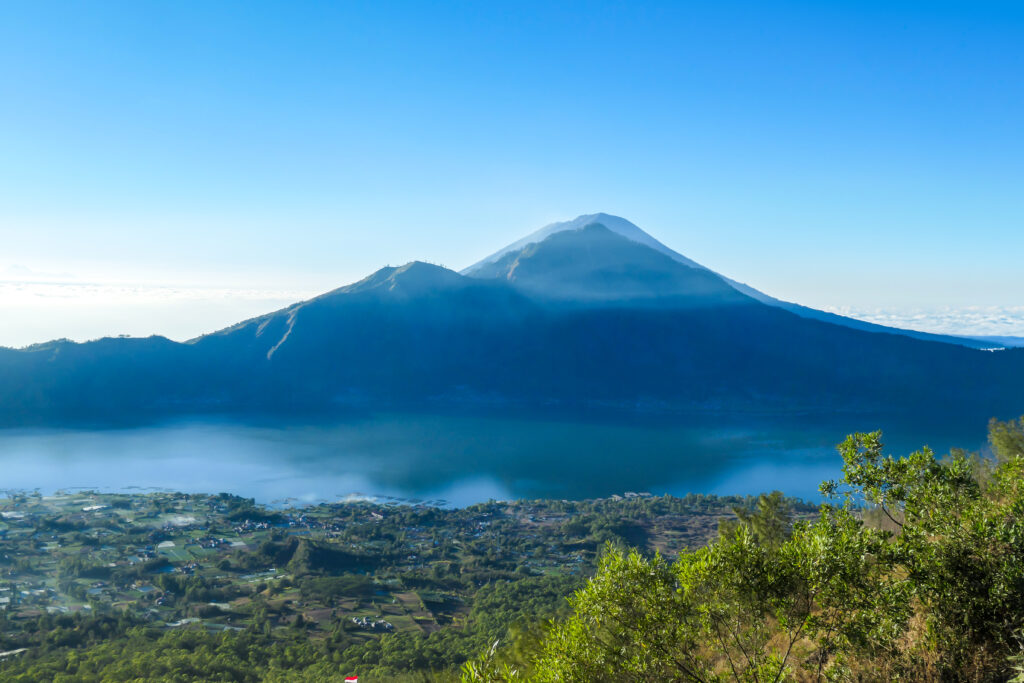
Located in the north of the island, Mount Batur rises to an altitude of 1,717 meters, making it the second highest in Bali, after Mount Agung.
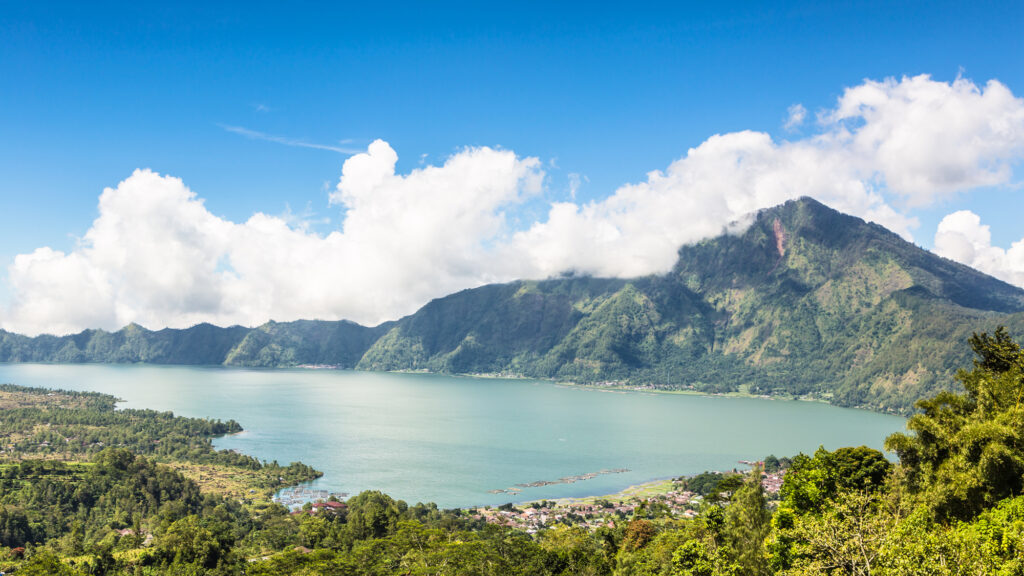
If it has a sacred character for the Balinese, it is known to climbers for the hike it offers to its summit. The most courageous of them take the departure at night in order to arrive in time to contemplate the sunrise on Bali. It takes about 2 hours to walk to the top. As the climb is done at night, so it is recommended to be accompanied by a guide. When the view is clear, the top of the volcano offers a splendid panorama on Lake Batur and Mount Agung.
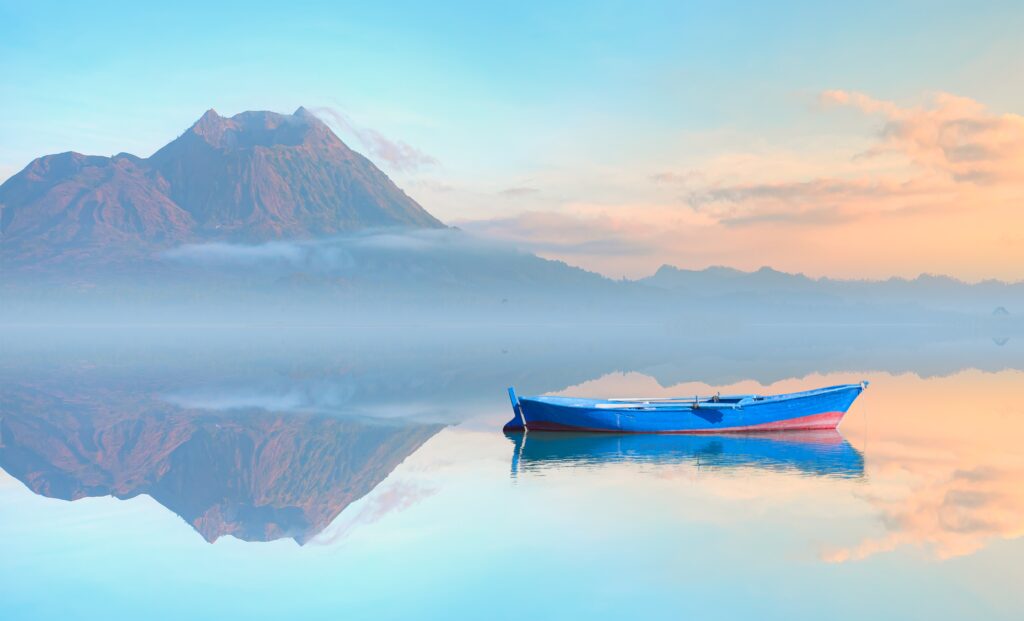
After having a hot drink to warm up, hikers can stop on the way down to observe the light smoke emanating from the crater, a reminder that the volcano is still active.
At the end of the hike, it is possible to go to the nearby natural hot springs to relax.
Bali is also known for the beauty of its seabed. The east of the island offers many diving sites. This is the case of Tulamben, where the wreck of the USS Liberty, an American warship from the Second World War, is located. Located a few meters from the beach, it is a delight for divers, who take advantage of their exploration to admire a rich and varied ecosystem.

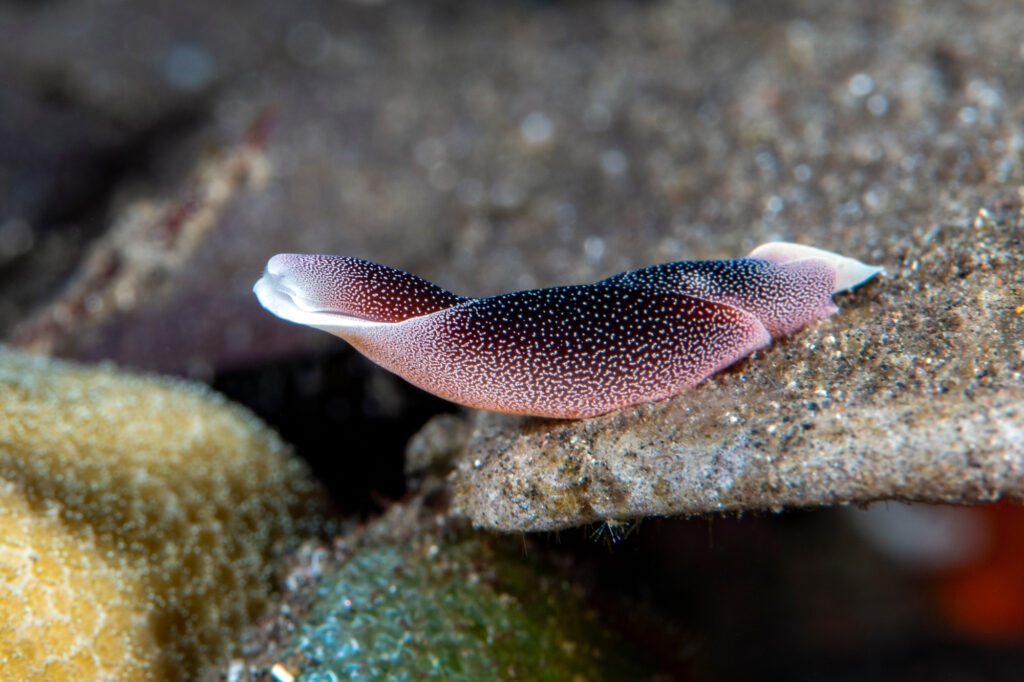
To observe the famous manta rays, it is necessary to move away from the main island and reach Nusa Penida. This island, accessible by boat from Bali, is famous for its marine fauna, especially its giant manta rays. Manta Point is the ideal spot to swim with this majestic fish.
The island is surrounded by beaches of various charms, each offering the possibility to travelers to indulge in their favourite practice. In the southwest of the island, Kuta Beach is a famous surfing spot and if some are not the type to tame the waves, it allows them to relax on the deckchairs or to enjoy the view from the many restaurants that border it.
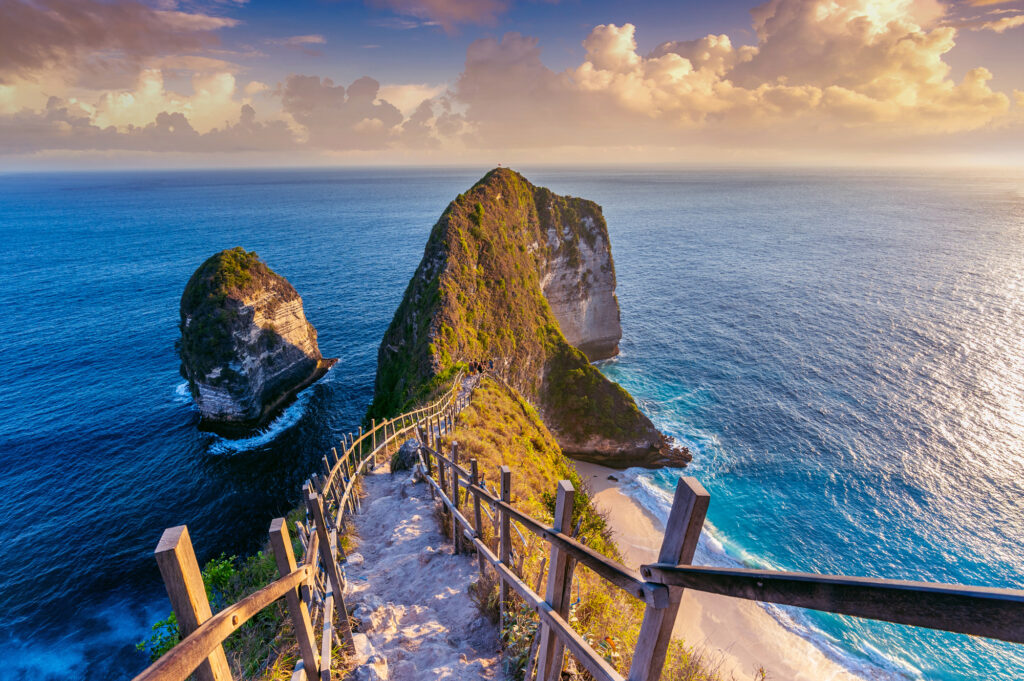
A few beaches north of the latter, Seminyak Beach is a wonderful place to sip a cocktail in front of the sunset, with its large expanse of sand and the colorful poufs of the bars and restaurants scattered facing the sea. A little further north, the 10 kilometers long Canggu Beach is an invitation to walk.
To the south-east, the beaches of Nusa Dua allow you to go jetskiing or paragliding, but the most beautiful is undoubtedly that of Geger Beach. Hidden and concealed between the cliffs, it seems cut off from the world.
Another iconic beach when talking about Bali but which is not on the island because it is located on the neighboring island of Nusa Penida to the west and accessible by boat: Kelingking Beach, especially observable from the heights of its rocky outcrop. A walk that is worth the detour but not recommended for those who suffer from vertigo.
To the north, the volcanic beach of Lovina is an experience in itself with its black sand and the observation of dolphins.
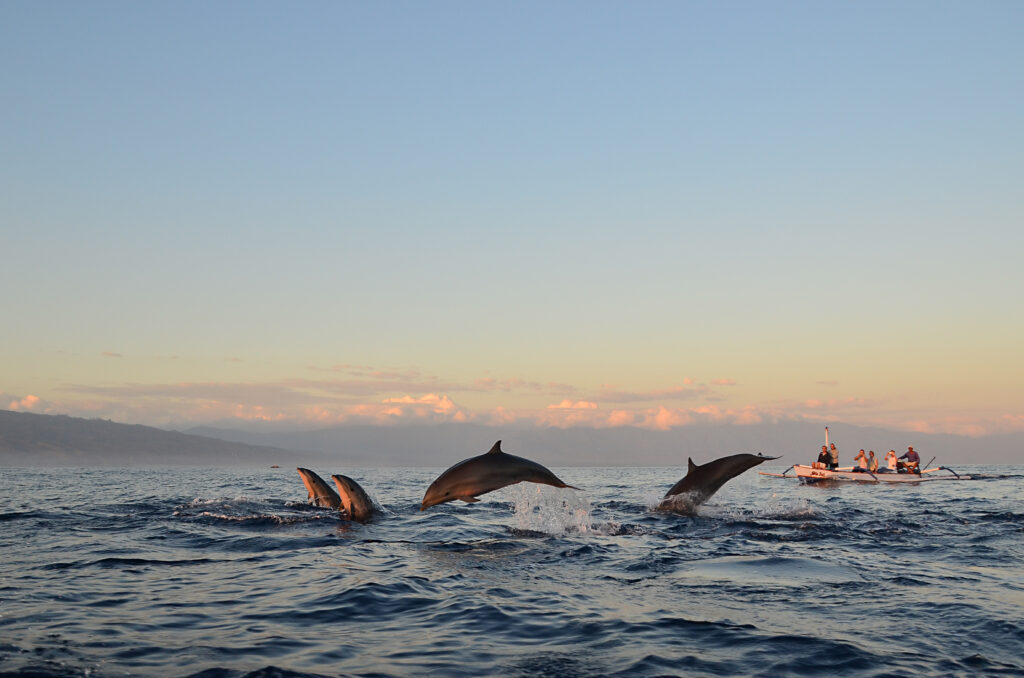
Located in Ubud, nestled in the highlands amidst rice paddies and rainforest, Four Seasons Resort Bali at Sayan is a place dedicated to contemplation and spiritual retreat.
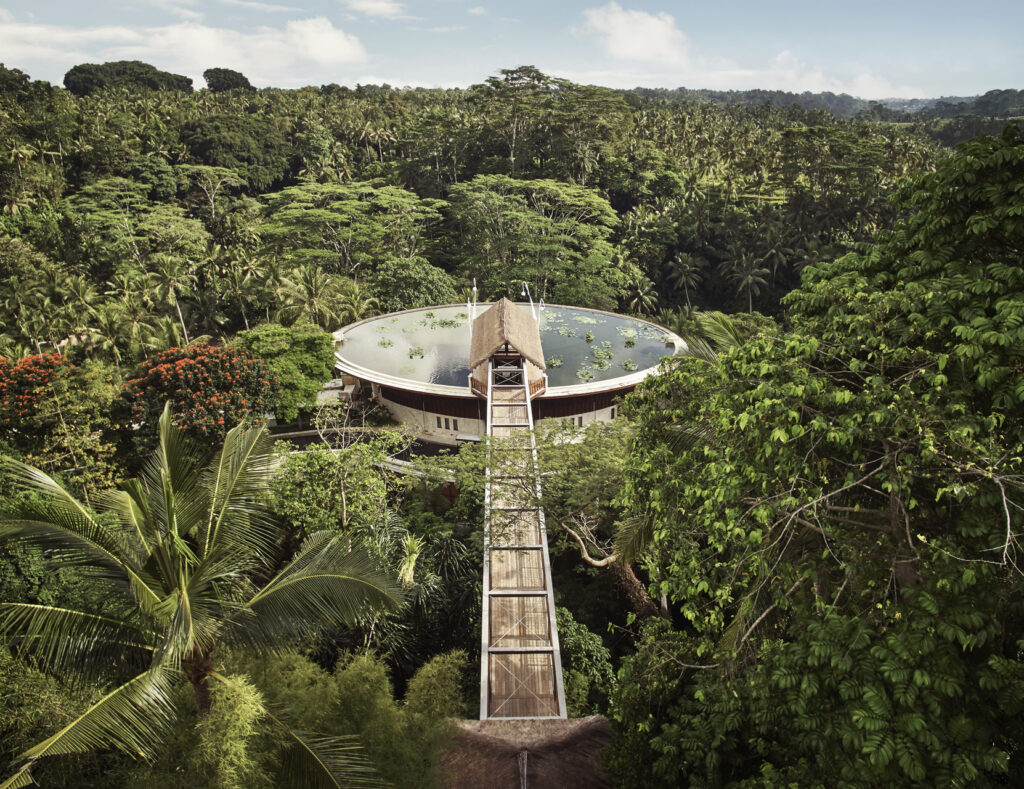
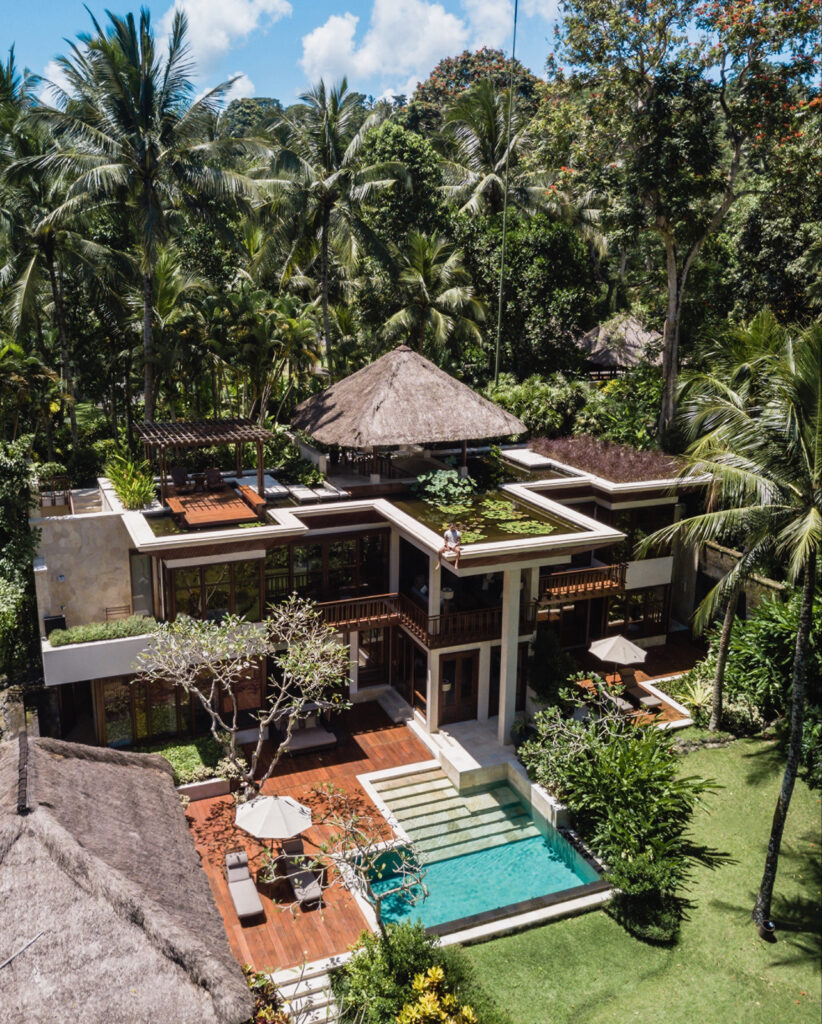
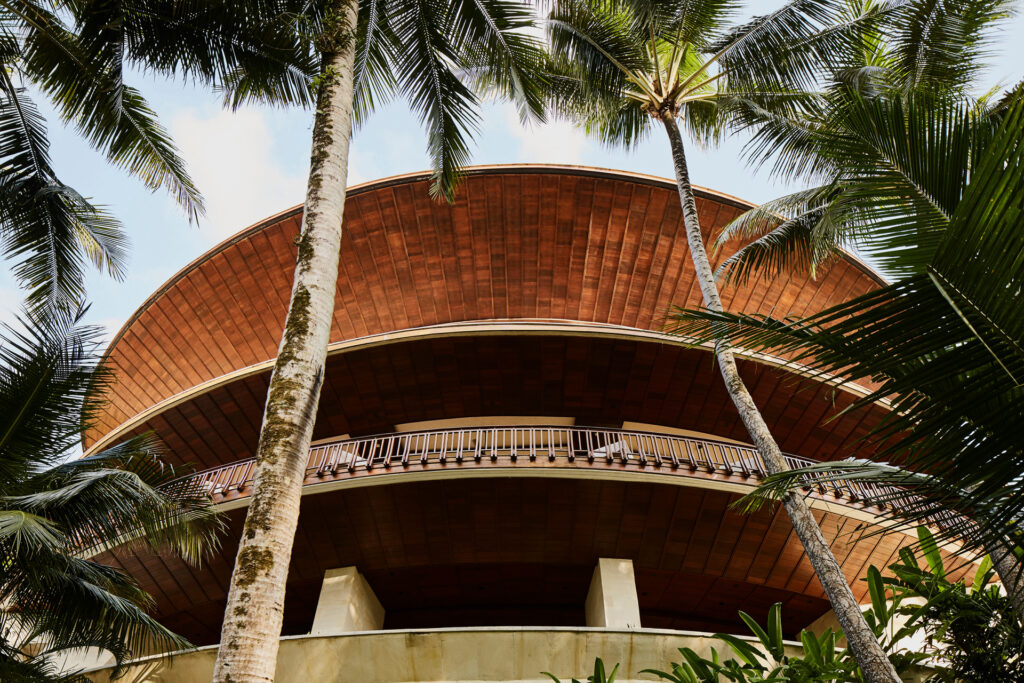
With its futuristic architecture, designed by the architectural firm Heah & Co, the hotel resembles a ship suspended in the jungle. The main body is shaped like a “rice bowl”, and with its different colonnaded floors, offers a panoramic view of the forest. On the top floor, a water mirror reflects the sky and the canopy, and a footbridge allows to stroll between the peaks.
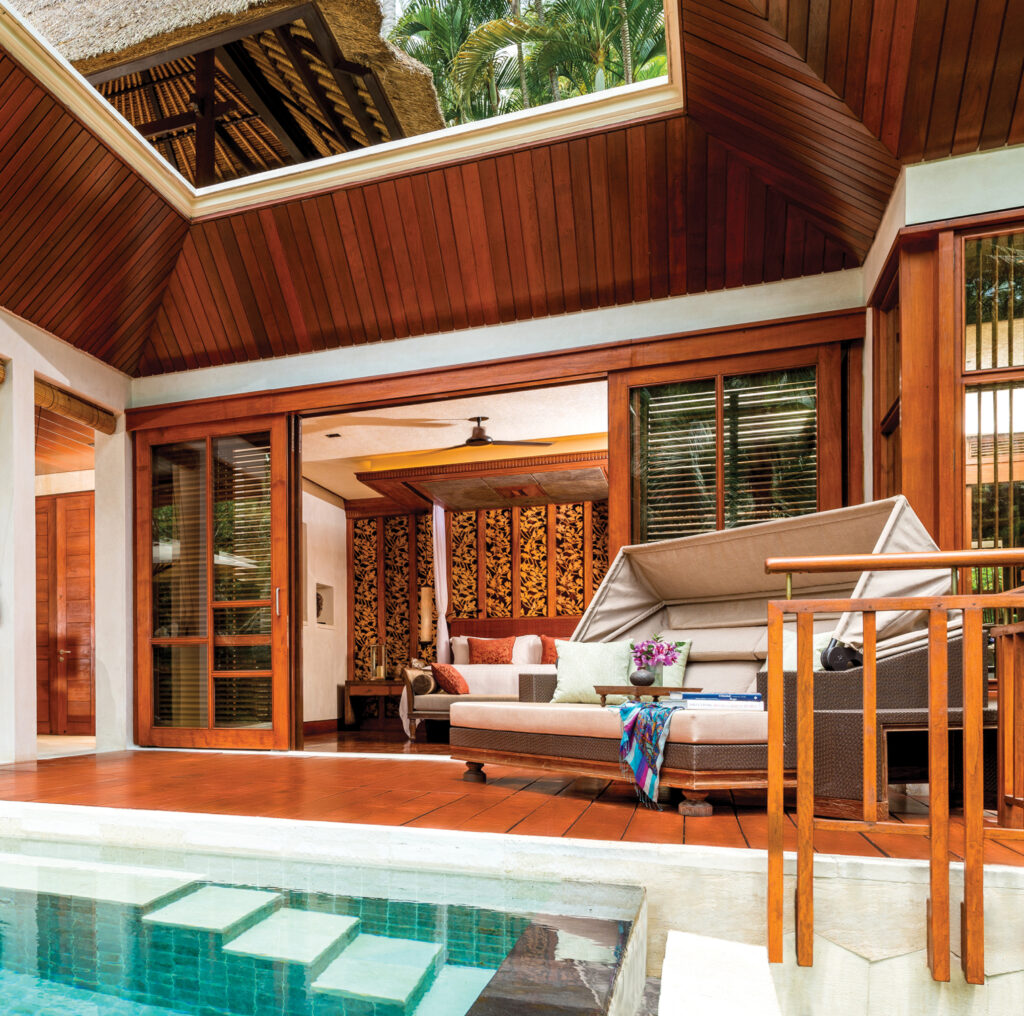
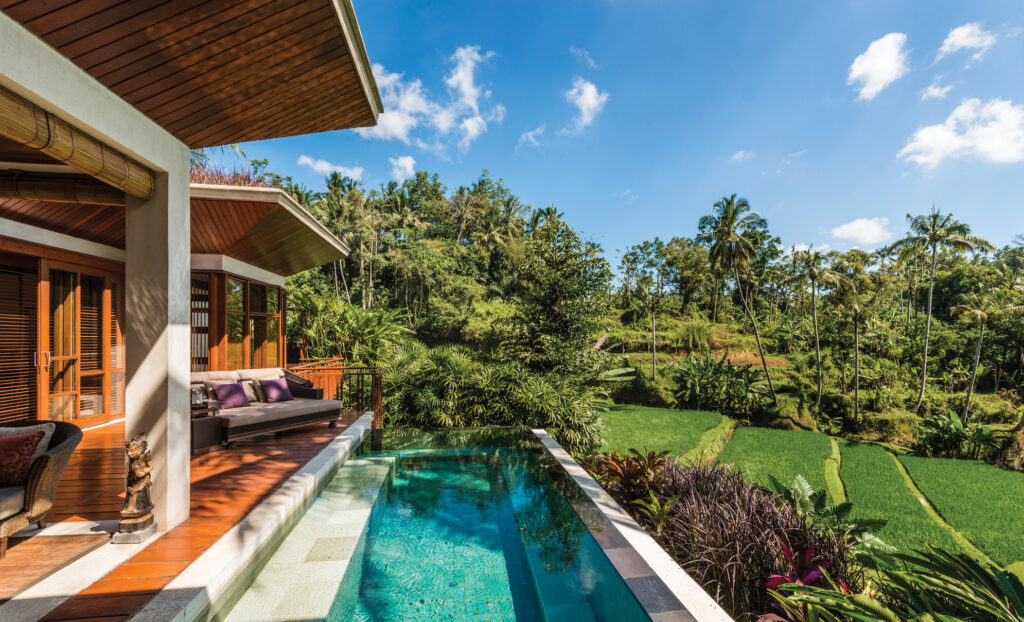
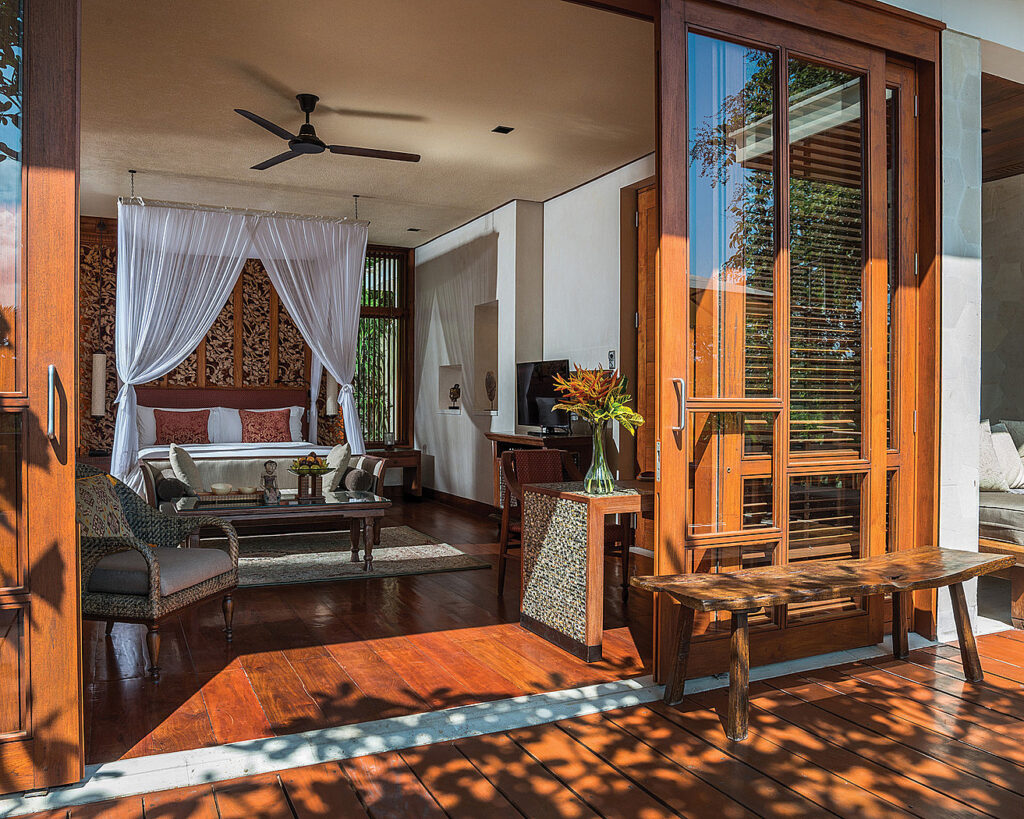
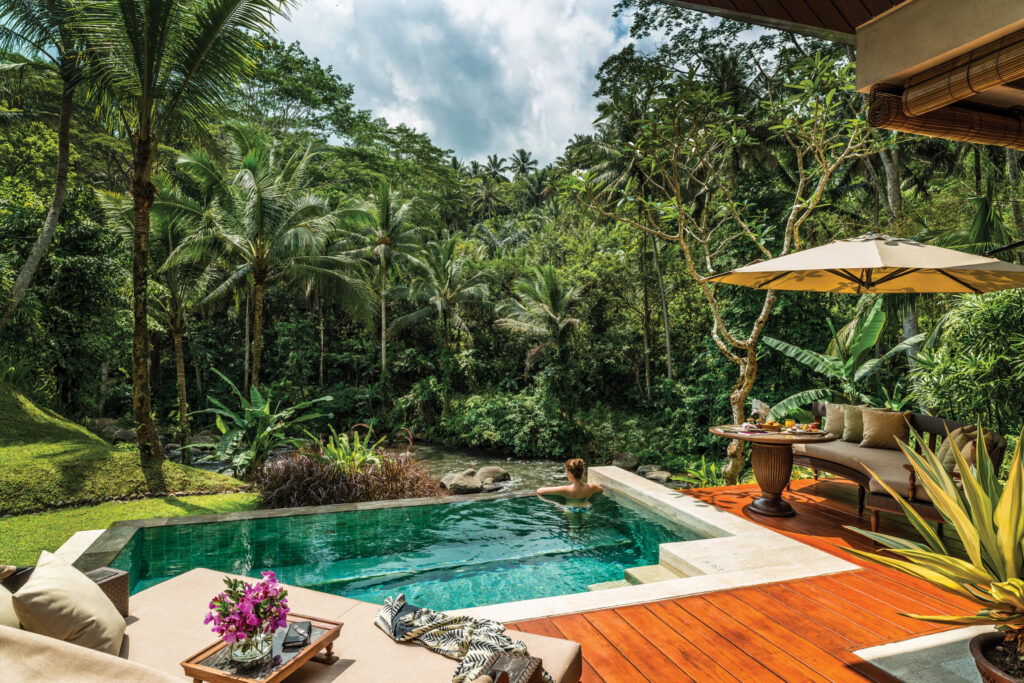
The hotel is surprising by the contrast it offers between modernity, nature and Balinese culture. The straight lines of the 60 villas, the high ceilings and the furniture give it a very contemporary look, while the omnipresence of wood reminds us of its natural and cultural roots.
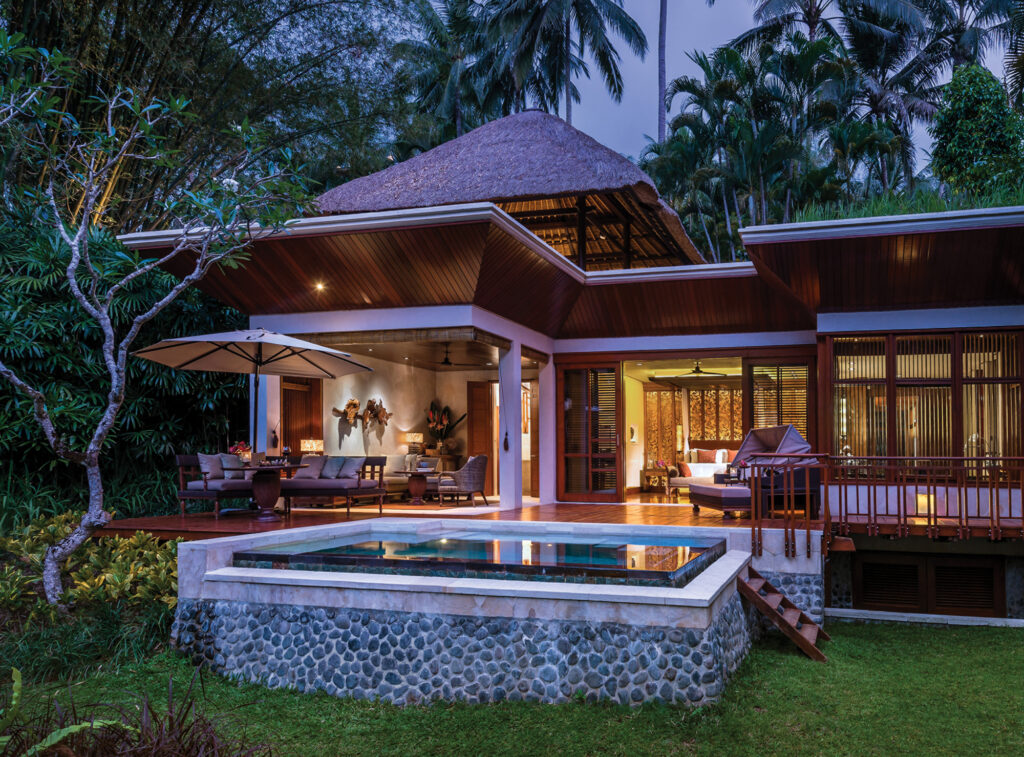
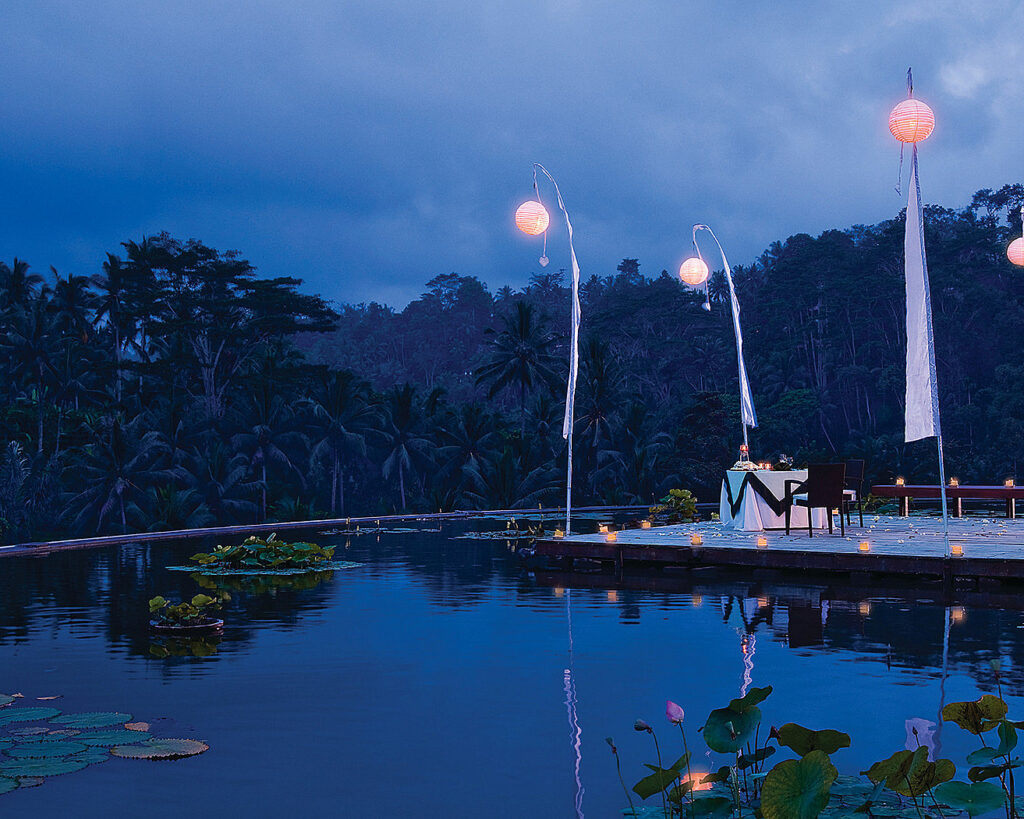
The hotel has three restaurants and bars. The Ayung Terrace, nestled in the treetops with a fantastic view of the property and the river, is the perfect place to start the day. Breakfast, lunch and dinner allow guests to experience the flavors of Indonesia, with signature dishes like Babi Guling (spice-rubbed pork belly, sautéed pumpkin leaf) and Lombok Losters (thousand spice, Morning Glory, Raw Sambal). Riverside, located by the pool on the banks of the Ayung River under a canopy of banyan trees, combines a European bistro atmosphere with Balinese decor, ideal for enjoying a menu of meats and seafood grilled to perfection with the restaurant’s Josper charcoal oven. Finally, the Jati Bar is a lounge where guests can sit down for afternoon tea or light snacks in the evening. The bar also has an impressive collection of spirits and barrel-aged gins.
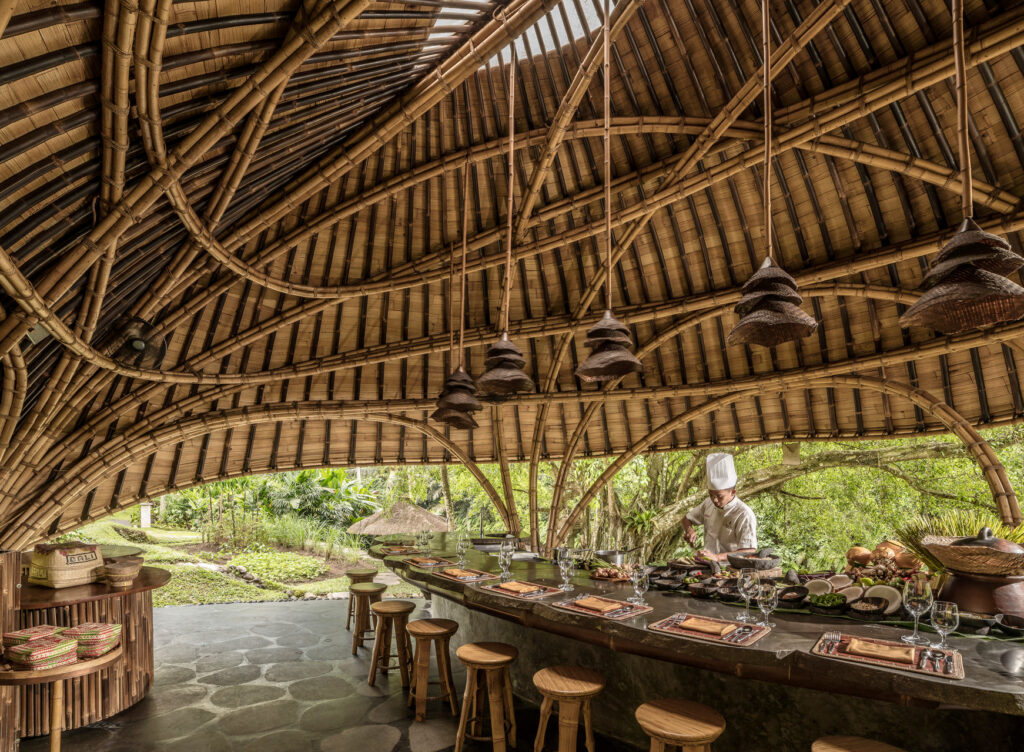
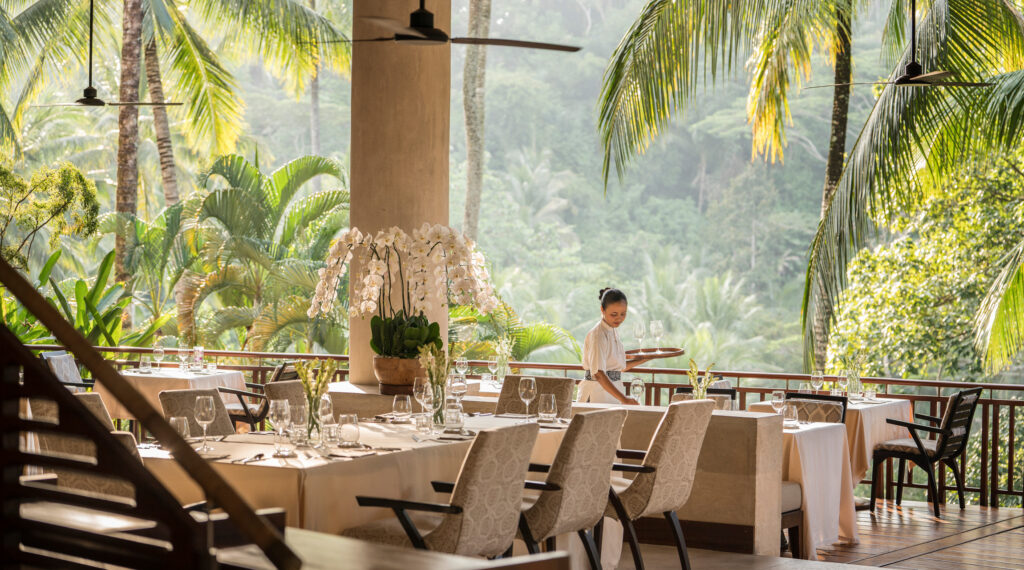
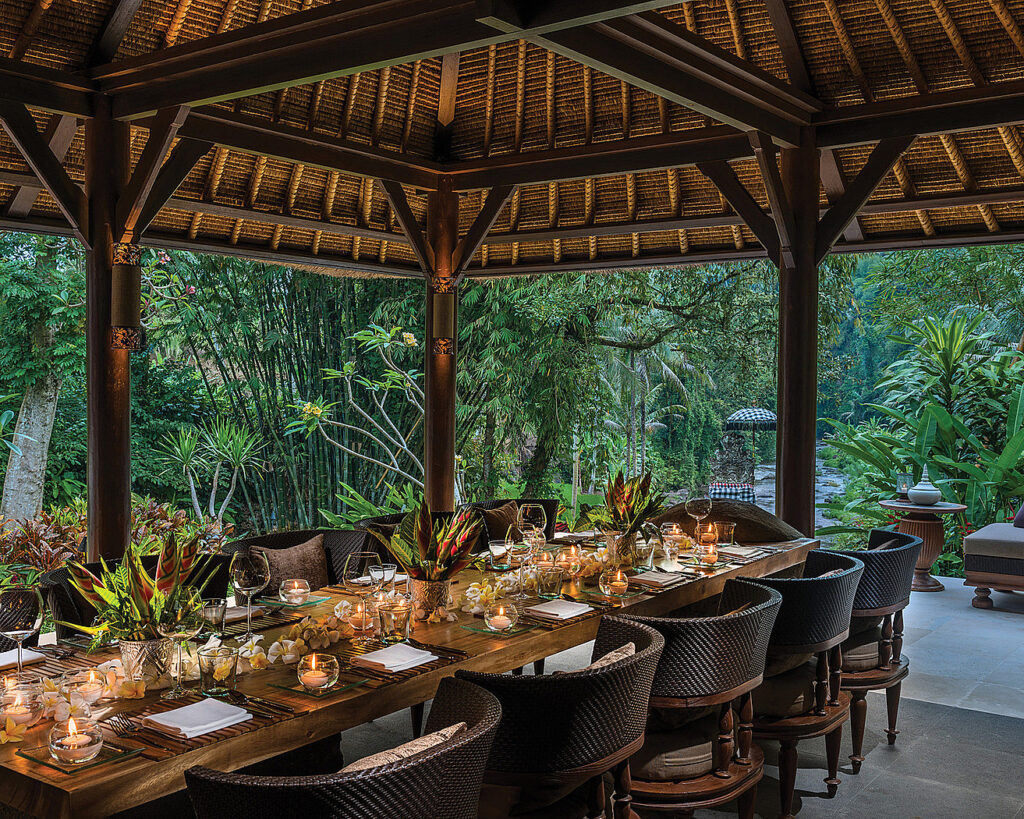
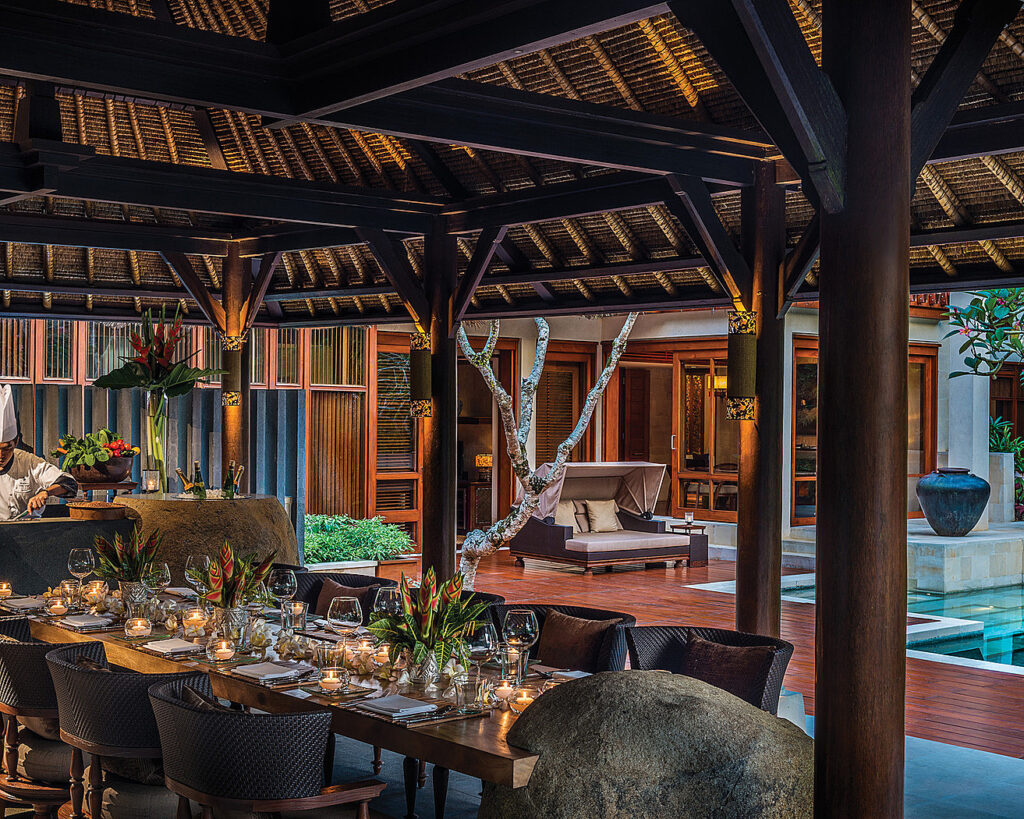
The hotel has made a name for itself as one of the country’s premier wellness destinations with its comprehensive spa treatment, which combines physical therapy, energy treatments, and spiritual guidance from Buddhist mentors.

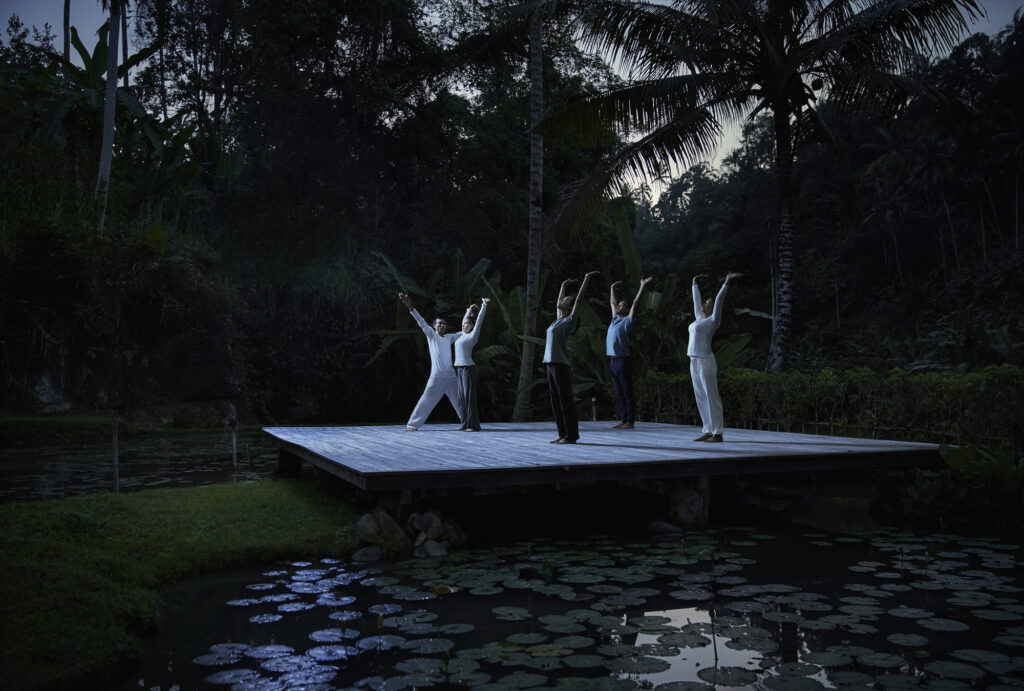
The resort also promotes a reconnection with nature and local life by offering meetings with Balinese rice farmers. It is also possible to take classes at the hotel’s Sokasi cooking school, which is located right on the river, in the open air: after accompanying the chef to the Ubud market, guests come back and learn to cook Balinese recipes where plants have a special place. Or, it is possible to go rafting along the river.
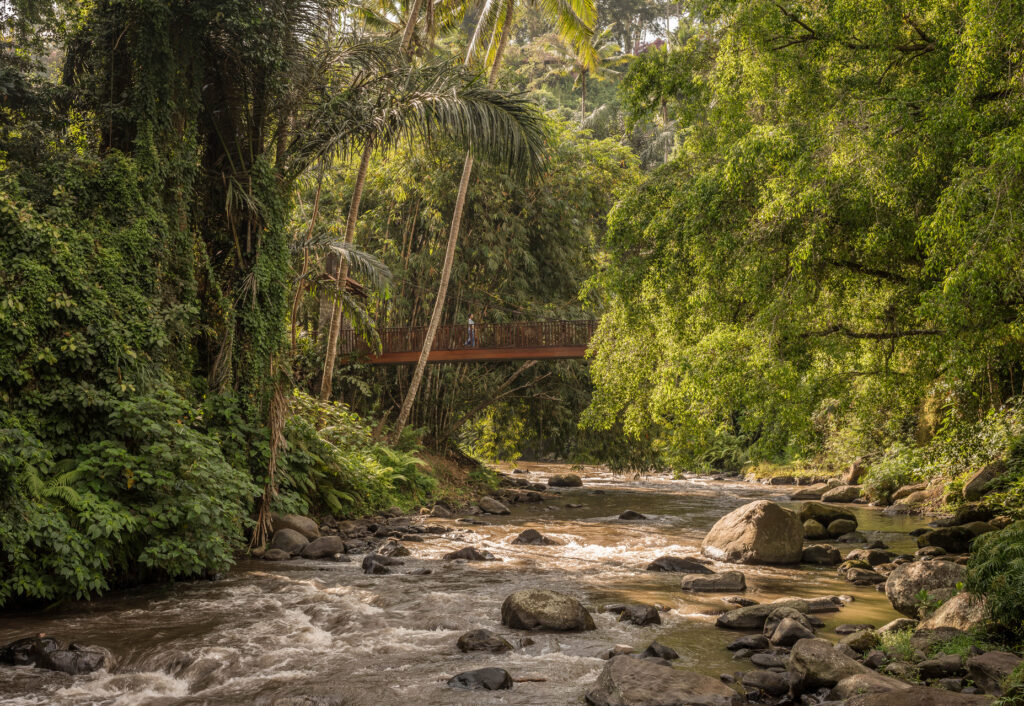
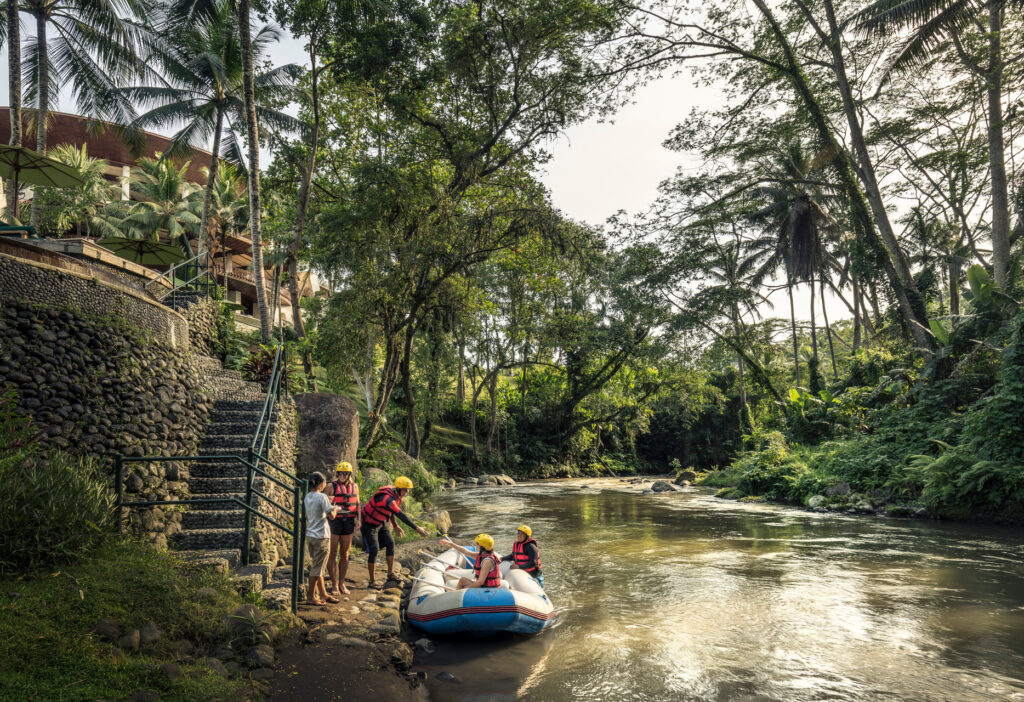
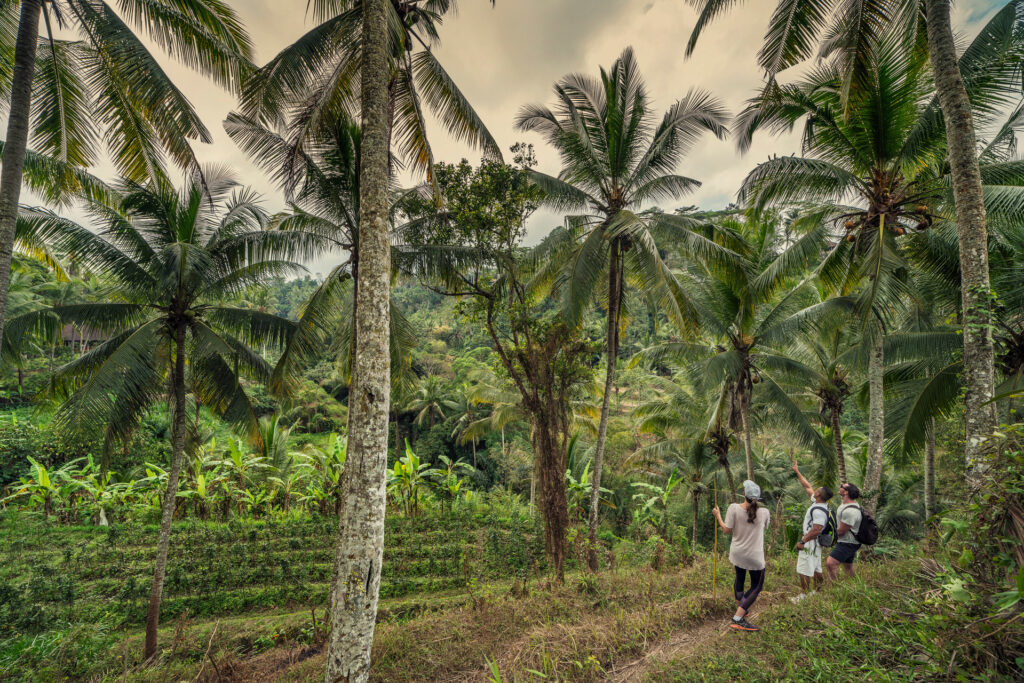
Address: Jl. Raya Sayan, Sayan, Kecamatan Ubud, Kabupaten Gianyar, Bali 80571, Indonesia.
Transfer: About 1.5 hours from Ngurah Rai International Airport.
Opening period: All year round
Book a luxury hotel in Bali with Lartisien. Our hotel selection is handpicked to offer guests an exceptional experience, facilities and service. Get in touch with our team for more information, to make a booking or about our bespoke immersion service to enhance your stay!